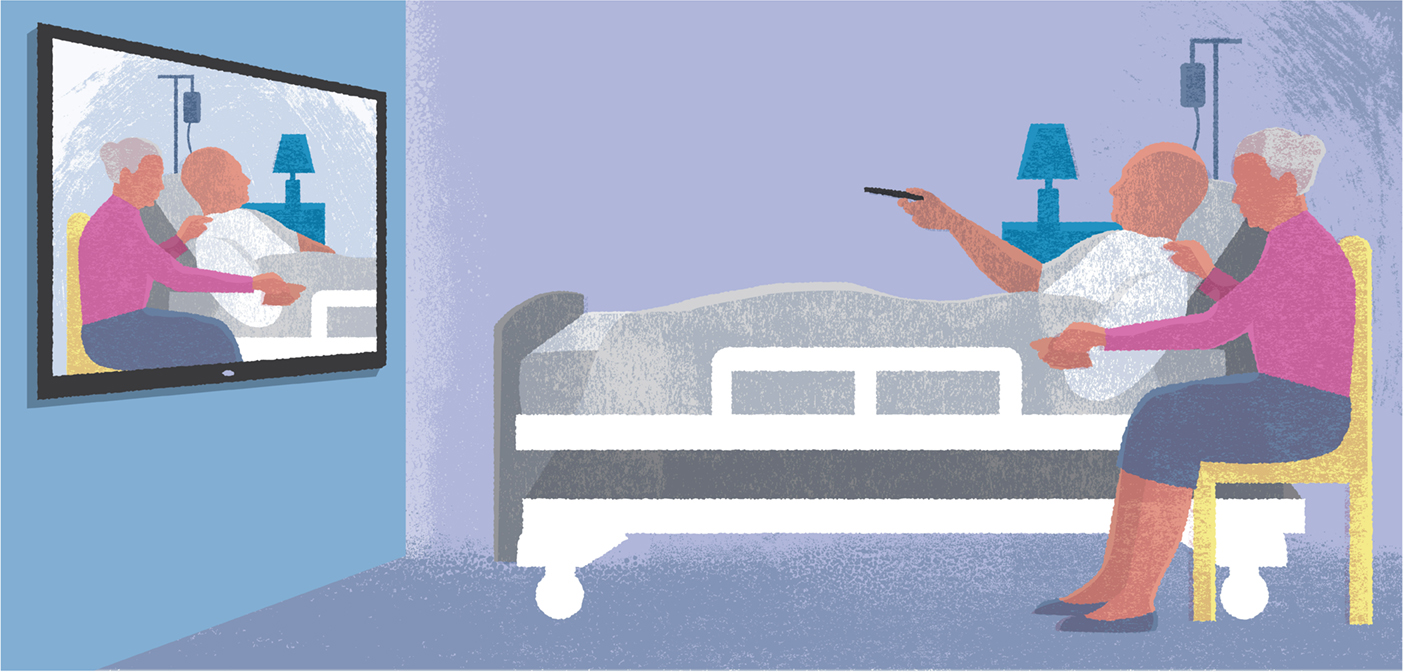WRITTEN BY STEVE ST. ANGELO | ILLUSTRATIONS BY ANDY SNAIR
How to cope with the intense emotions that generally accompany a stay in hospice for patients and their families can be difficult to share via standard informational videos, which consequently can often be hard to find anyway. But nobody does drama like the “telenovela,” a common Spanish-language term for soap opera-styled TV programs beloved by millions across the world. And as it turns out, their appeal and their usefulness extend far beyond boy meets girl and … drama ensues.
In “Comparison of Traditional Videos with Telenovelas for Hospice Family Caregivers Education” (American Journal of Hospice and Palliative Medicine), Assistant Professor Martha Abshire Saylor, Associate Professor Chakra Budhathoki, Assistant Professor Melissa Hladek, and several colleagues report that caregivers in their study watched health care telenovelas longer (12 percent), retained more key health information related to patient care, pain and symptom management, and self-care, and reported more follow-up actions and reflection about their own hospice experiences.
That technology-enhanced materials in the hospice setting improve learning outcomes isn’t new. But if the innovation of using of telenovelas improves information sharing as much as the study suggests, it could mean a dramatic reduction in stress for hospice caregivers.
Tune in tomorrow.
